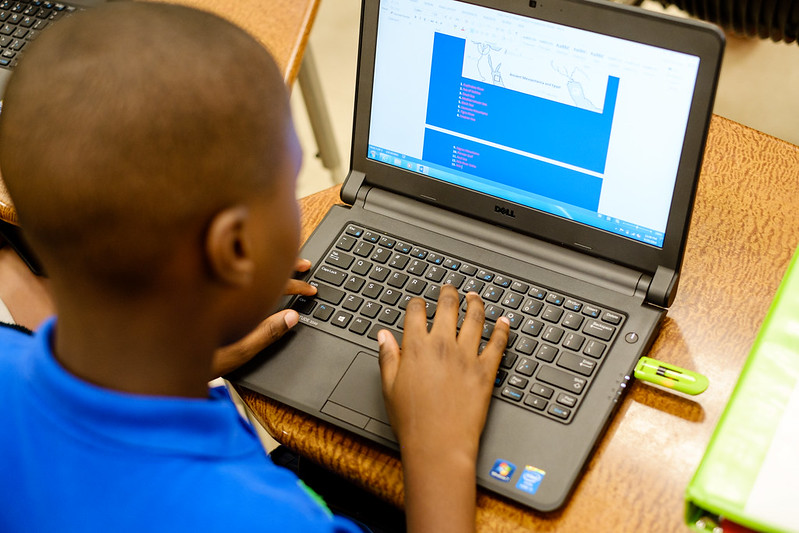
As parents across Tennessee deal with the challenges of working from home while trying to educate their children, SCORE is bringing you a variety of perspectives on coping with school closures caused by the COVID-19 outbreak. For another perspective, be sure to read A Non-Educator’s Guide To Parenting During The COVID-19 Crisis.
The current health crisis affecting our country has students from coast to coast at home and away from classrooms, likely for the next several weeks. As a result, many parents, relatives, and friends who are home caring for these students find themselves looking for ways to keep kids academically engaged while also balancing working from home and household tasks.
This can be challenging — even for those who are veterans of working from home with kiddos in the background. I knew that my family needed a plan to ensure we would each stay on track and to make sure my daughter would remain engaged in academic learning, so I leaned on skills I developed from my time as a classroom teacher and created a lesson plan for my daughter.
I understand that most people attempting to develop a similar plan will not have teaching experience to draw from, may not have a lot of time to dedicate to building such a plan, and may need to develop a plan that accommodates multiple kids with varying needs, but I’d like to share a few tips from my planning process in hopes that it may be helpful to others.
Find resources that your child can complete independently or with limited assistance.
My fifth-grade daughter is fairly self-sufficient and used to working independently on homework assignments and projects. I’m hoping she’ll be able to do the same with the learning packet and online lessons shared by her school, but if additional independent work is needed, I found a few things to keep her busy. Her school district’s website features a list of online learning resources that can quickly be pulled up on a computer or tablet, and we’ll use these learning platforms as needed. I’ve made sure she has plenty of books to read — a combination of the paperback books she has at home and audio and e-books we’ve downloaded from Audible, e-Books, and our local library. Additionally, I plan to allow my daughter to create artistic projects of her choosing. These projects could be anything from making a paper flower to writing a poem; I’m leaving this up to her.
Create and maintain a daily schedule for your child that aligns with your work schedule.
Working from home for both me and husband has required us to stay engaged with co-workers and colleagues. With conference calls, virtual meetings, and video chats, we’ve had to trust our daughter to quietly complete her assignments (or quietly entertain herself) while we interact with team members and partners. I created a schedule (below) that matches her assignments and independent work with our meetings and calls. We are still struggling to determine whether this schedule will keep her busy and engaged while we’re working, but I am remaining flexible and hopeful.

Have designated working spaces for you and your child.
In my home, this means we each have certain rooms and/or spaces where we work. My husband prefers to work at the kitchen table, while I’m more comfortable working from the desk in my bedroom or the couch. Depending on the task or activity my daughter is completing, she’ll be allowed to work in either the living room or kitchen. However, when my husband or I will need silence in our backgrounds, she’ll complete her assignments in her bedroom. Entertaining, independent work will be key during these moments.
Make your child’s learning time fun.
For my family, this means that every few hours we pause our work to get up and move. My daughter loves to dance, so this will be the perfect time for mini dance battles.
Use household tasks to practice real-world application of core concepts.
In addition to academic assignments, my daughter will also be expected to complete daily chores. She usually helps with preparing dinner and assists in cleaning up afterward. I’ve been thinking of ways to talk to her about how math and science have been used to help improve people’s daily lives, such as the invention of cleaning tools and chemical reactions in cooking. I haven’t quite figured out all the details of these discussions yet; I’m still looking for ideas on this.
I hope these tips are helpful to those looking for ways to balance working from home while keeping children academically engaged during these unique times.
Shaundraya Hersey is advocacy manager at SCORE.
